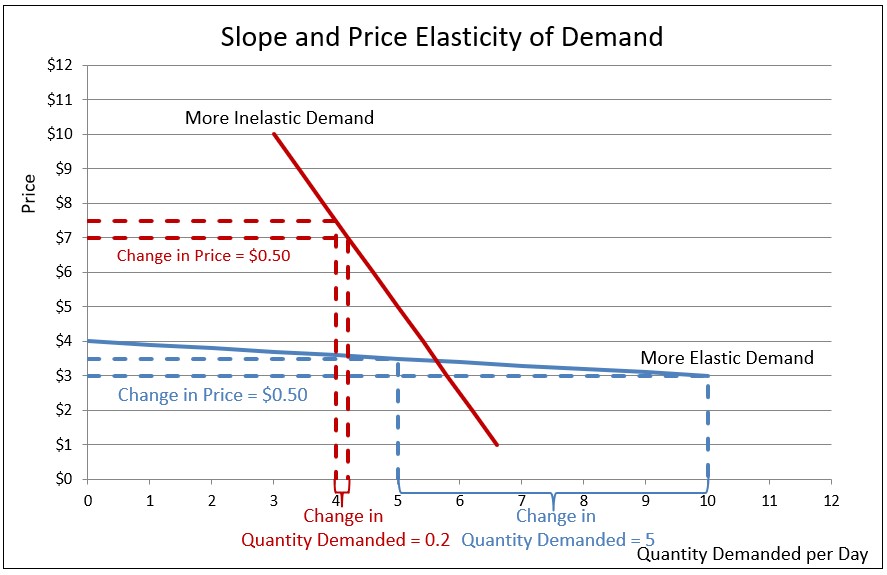An elastic demand is a good or service's demand that has a price elasticity of demand greater than one. The percentage change in the quantity demanded is greater than the percentage change in price following a price change.
The formula for the price elasticity of demand is:
An elastic demand has a price elasticity greater than one. When the demand is elastic, a price increase will result in a larger percentage reduction in the quantity demanded. Here, total revenue will fall when prices are increased and rise when prices are decreased. An elasticity of 1.5 means that if there were a one percent decline in price, there would be a 1.5 percent increase in the quantity demanded. Conversely, a price increase will result in a decrease in total revenues.
In general, an elastic demand curve is less steep than an inelastic demand curve because the quantity demanded is more sensitive to price swings. The graph below illustrates this point. It contains two demand curves. The red demand curve (more inelastic) is much steeper than the blue demand curve (more elastic). Clearly, a small change in the price has a much greater impact on the change in the quantity demanded for the blue curve.

Fine restaurants and most other luxuries have an elastic demand because they are not necessities and have many substitutes. Dinner at a fine restaurant is more susceptible to price increases. The law of demand asserts that as the price of a meal at a fine restaurant increases, the quantity demanded for that meal decreases. Some customers would choose to patronize another less expensive restaurant if the management of a restaurant raised prices too high.
Watch as two budding entrepreneurs quickly learn that they are limited in the amount they can raise their price. When the demand for hot chocolate becomes elastic their revenues decrease after increasing their price.
Price Elasticity of Demand – How Consumers Respond to Price Changes
Demand – The Consumer's Perspective
Changes in Demand – When Consumer Tastes Change
Supply and Demand – When Producers and Consumers Reach Agreement
Price Elasticity of Supply – How Does a Producer Respond to a Price Change